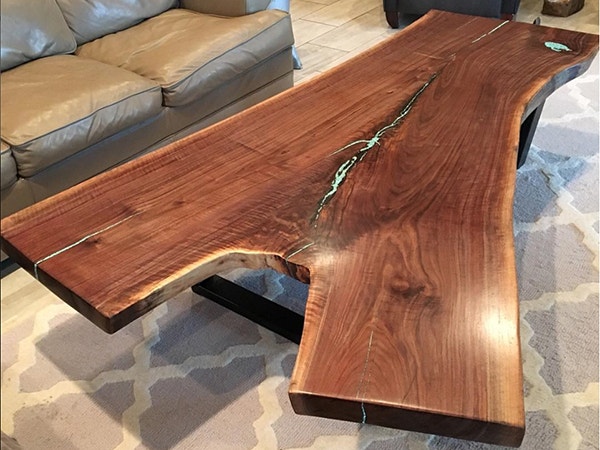Why Did Sanded Epoxy Turn White?
Recently I filled a live edge slab with two-part epoxy. I needed to sand the top after it cured, including the epoxy fills because they were too high. Some of my sanded areas turned white (I had tinted my epoxy light blue … it was see-through voids that look like lakes and rivers). Most of the sanded epoxy did NOT turn white. I'm in a panic. What should I do to get the epoxy to not be white? What did I do that made it white in the first place? This is my first project ever. – Leslie Lewis
Tim Inman: Epoxies generally do not like to be messed with. Adding a tint or coloring agent is almost surely the cause of your "white" complaint. The only other possibility that comes to mind is over-catalyzation. Unlike resin systems like polyester "Bondo," which use a catalyst to trigger the hardening reaction, epoxies use a resin/hardener system that must be balanced. Too much of one (usually it is the hardener that gets overused) will yield a poor product after setting because the two actually bond together to make the "glue." With polyesters, the catalyst is just triggering a cross-linking reaction. So, what to do? Follow the container directions to the T, especially when using epoxy. If you need colors, test on a sample first to be sure!
Chris Marshall: So, the epoxy cured clearly but turned white when you sanded it? Or, some areas became white even before sanding? This part of your description isn't clear to me, but it could point to another possibility for the problem: your sanding technique. To what grit level did you sand the epoxy, and how carefully? The reason I ask is because sanding to, say, 120-grit will yield a different result than sanding to 1000-grit. Why? Well, the smaller the sanding scratches are on the surface, the better that light rays can penetrate into the epoxy. If the surface has a matrix of coarse scratches, it might be appearing white because light is diffusing in all directions rather than penetrating straight into the material. It's the same effect that a hazy headlight lens will have on a car: it won’t shine a beam as far or as brightly as a clear lens will. So, you might try sanding the white areas again through successive grits up to a much finer grit level. As the scratches get smaller, the clarity should improve. Don't skip any grits. But if that doesn't help and the "whiteness" seems to be penetrating down into the epoxy, then as Tim says, the problem was in the mixing ratio or some other contaminant that's impacting the clarity of the final cure.
Keep the inspiration coming!
Subscribe to our newsletter for more woodworking tips and tricks






